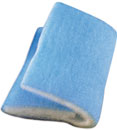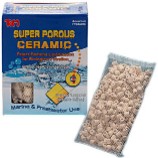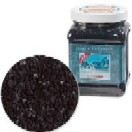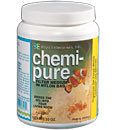Aquarium filter media improves water quality, influence the overall health of the aquarium and maintains the nitrogen cycle.
There are three types of aquarium filter media – Mechanical, Biological and Chemical.
They all help keep the aquarium clean and healthy environment for your inhabitants to live in.
Your aquarium needs to have at least biological and mechanical filters for a healthy saltwater aquarium fish and other inhabitants you may have. Let’s discuss their differences and functions.
Mechanical

Mechanical Filtration is the process of removing the solids from the saltwater aquarium before it decomposes and becomes toxic to your inhabitants.
It helps improve the health in most saltwater aquariums. It is also important for the efficiency of your biological filtration.
So the aquarium filter media itself physically strains and traps solids wastes from saltwater passing through it. This will do nothing to alter the water chemistry.
It removes solid matter like uneaten fish food, fish waste, plant debris and dust. It will help in removing unsightly solids from your saltwater for a clear and clean appearance.
It also helps keep the debris from reaching your biological filter media where build up can occur that can create dead spots and then nitrifying bacteria wont be able to reproduce.
It’s also important to know that mechanical filter media varies by porosity. It controls the size of the solid you want to extract.
Remember that the smaller the pores are, the faster your aquarium will be cleared of solid wastes, but the faster your aquarium filter media will clog up.
Larger pores media are also known as coarse media.
They are easier to clean and reuse than the smaller, finer media available.
To prevent build up, mechanical filters needs to be removed, regularly cleaned and replaced.
You can replace the media by simply rinsing it thoroughly.
Maintaining this media will ensure long term success of your saltwater aquarium.
Biological
Biological Filtration is the process in which bacteria breaks down toxic compounds into less toxic form.
Lets try to understand first how bacteria thrive so we can fully learn this media.

- Environment above 55°F
- Need ammonia or nitrite as food source
- Need oxygen for life
Bacteria gets its oxygen from the water moving in the aquarium.
When solid matter gets trapped into the media (mechanical media which is why this is suggested before bio media), it decreases the water flow which creates oxygen that bacteria needs to survive. This will then cause the bacteria to die.
Every time you add another saltwater fish or other inhabitants in your saltwater aquarium, bacteria reproduce because of the amount of ammonia and nitrite present in the water.
Until the ammonia level drops to zero, the bacteria that consume ammonia will reproduce very quickly.
You know how some other saltwater aquarium looks like it has smoke in it?
This is when it happens, bacteria over-produce and cause a bacteria bloom”.
The amount of bacteria will grow over time and will overcome the ammonia spike.
This is when the bacteria starve and die and then the smoke disappears.
Biological media houses the natural bacterial process involved in the nitrogen cycle which converts toxic chemical compound ammonia into nitrite then into nitrate.
Many hobbyists consider biological filter as the most important filtration system. Biological media or bio-media is any material that helps break down ammonia.
These filters in your saltwater aquarium are a place for bacteria to grow. A good source of bacteria is a bacteria additive or you can scoop gravel form and established and healthy aquarium.
The media is placed in the filtration system of your aquarium where saltwater passes through then brings nutrients and oxygen to the bacteria and then completes the nitrogen cycle.
Water flow affects the efficiency. The faster the water moves, the more efficient it is. Replacement of this media is not necessary unless it has become too clogged to function.
Chemical
Chemical filtration is the process of treating saltwater by removing unwanted products through a chemical reaction.

It removes impurities from your saltwater such as copper, chlorine, medications, tap water impurities, discoloration, and dissolved proteins.
Activated carbon, the leading medium used and resins use the process of absorption to remove impurities in the saltwater.
For activated carbon to be effective, water should pass through the mechanical portion of the filter first.
This is done so that the particles that are going to reach the chemical filter wont clog the carbon. Other particles in the saltwater that can threaten the stability of the water condition are copper, ammonia, and phosphates.

Another form of chemical media is resins. It helps lower nitrate buildup by removing pollutants before then break down and enter the nitrogen cycle.
It also complements the ability to filter of activated carbon.
Two other forms of chemical filtration are protein skimmers and ozonizers.
If your aquarium is stocked with lots of saltwater fish and/or other inhabitants, protein skimmer is necessary. It works by creating tiny bubbles in a reaction chamber. When the bubbles burst, they expel proteins into a cup or a tube.
Skimmers remove proteins before nitrifying bacteria break them down into nitrate. Click here to learn more about protein skimmers.
With less waste to process, the bacteria consume less oxygen. Higher oxygen levels and low nitrate levels mean better health for your aquarium inhabitants.
Return from Saltwater Aquarium Filter Media to Main Page
